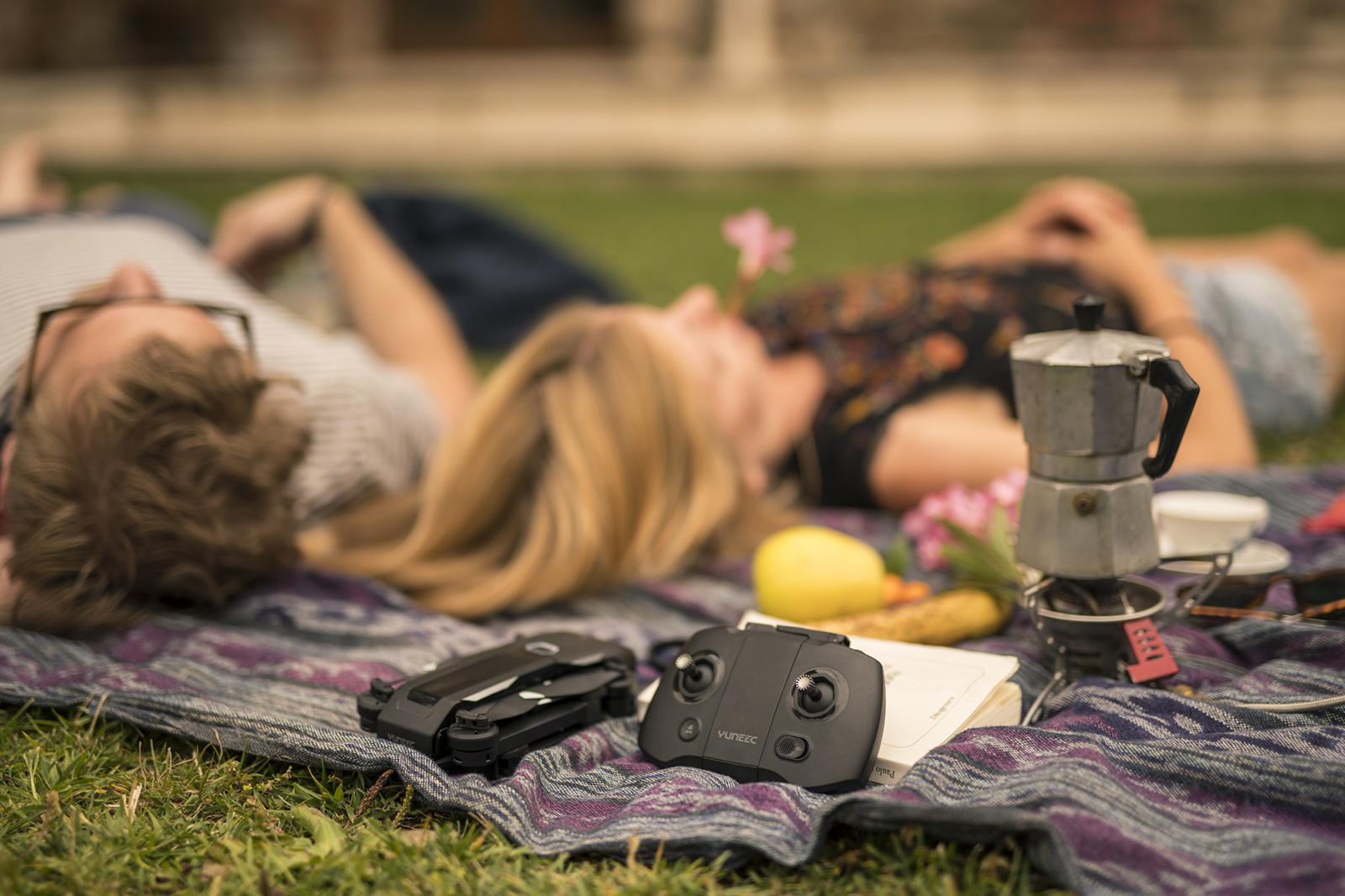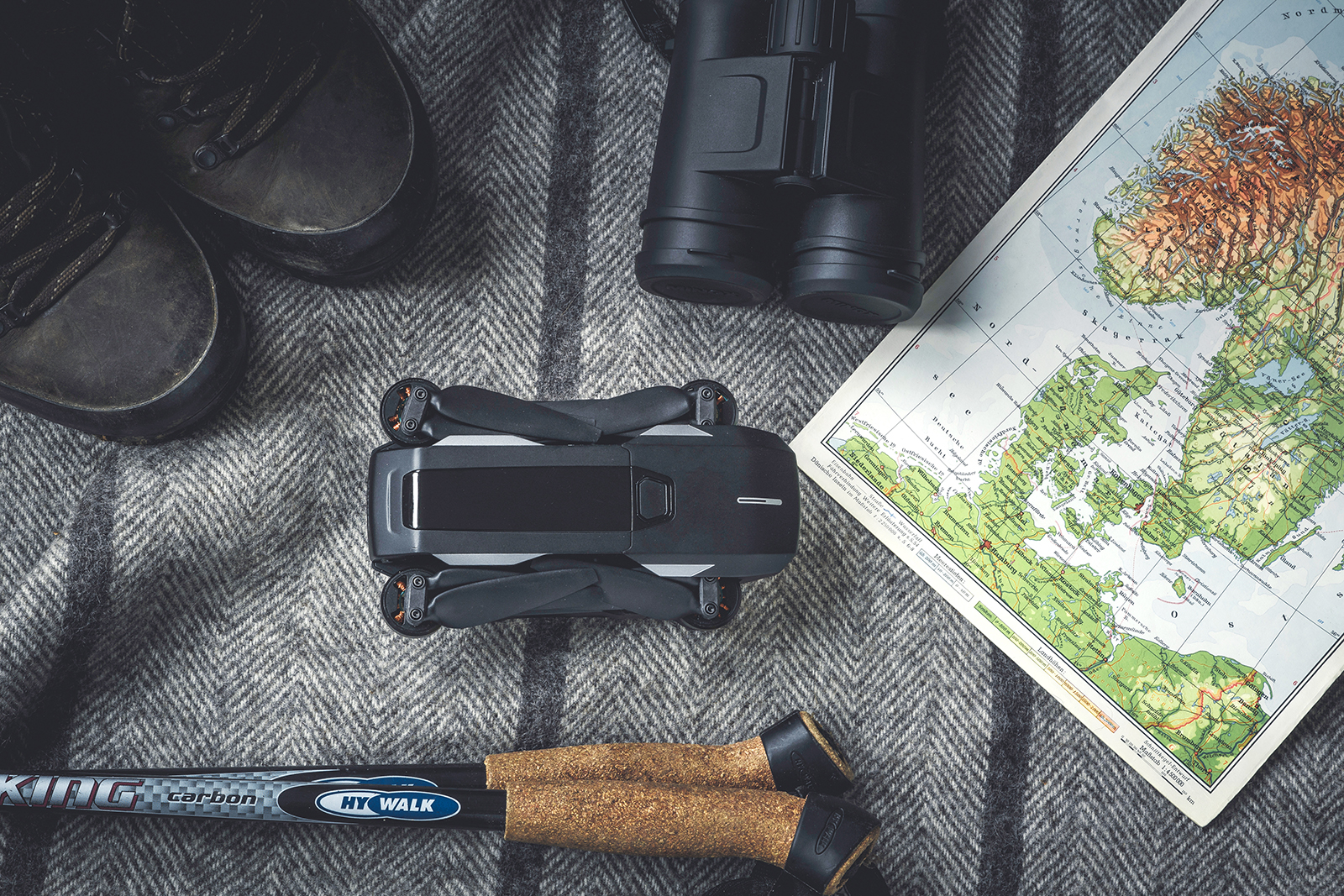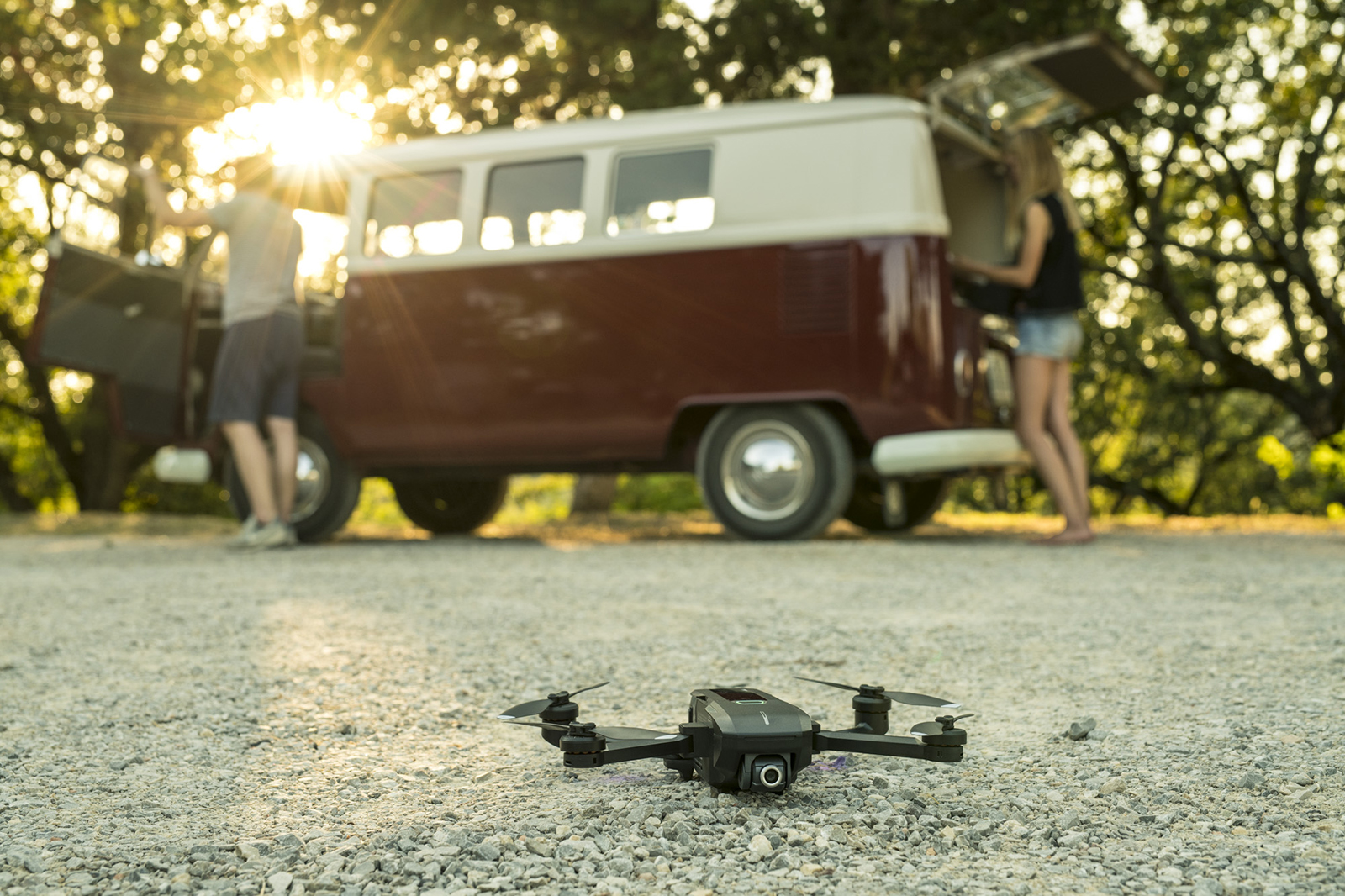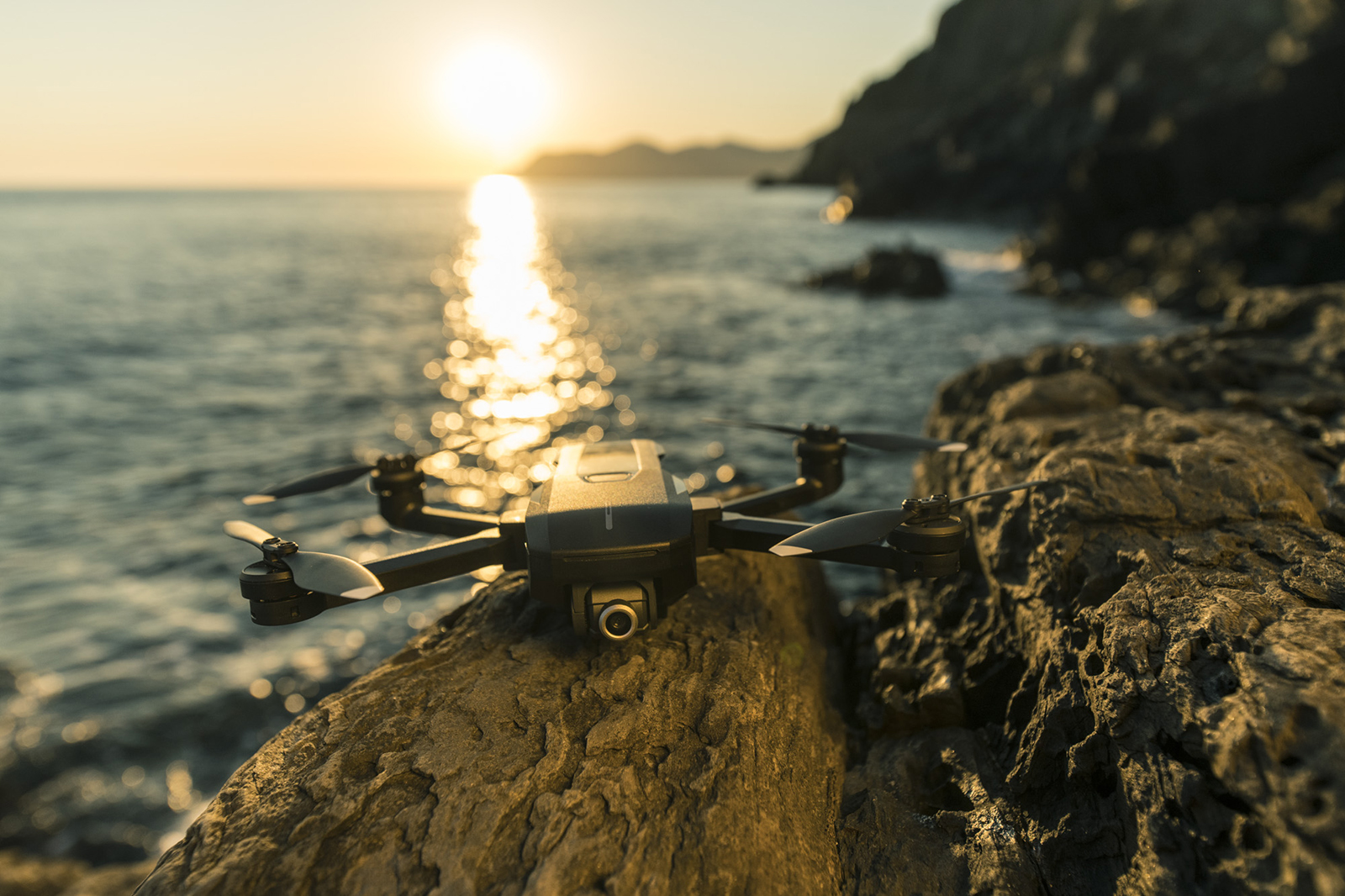Talk, wave, or smile, and Yuneec’s newest drone will snap a photo. The Yuneec Mantis Q, as it’s called, integrates voice control and 4K inside a $500 folding drone designed for adventurers, families, and UAV enthusiasts.
While voice control has become increasingly common in devices like smartphones and smart speakers, it’s a rare feature (and to our knowledge, possibly a first) for drones. Yuneec’s new drone can reportedly respond to commands like “record a video,” “take a picture,” and “take a selfie.” You can even turn the Mantis Q on with a spoken “wake up” command.
Of course, the Mantis will have to hear you for those commands to work — and Yuneec doesn’t say how close you need to be in order for the drone to hear your commands, or how environmental noise like wind may play a role.
If yelling at the sky isn’t your style, Yuneec has also integrated facial recognition into the drone, allowing a smile to trigger a photo from up to 13 feet away. Similarly, the quad’s built-in gesture controls allow you to trigger a shot with a wave of your hand.
These fancy control options aren’t all that the Mantis brings to the table, though. The drone also boasts a number of preset flight modes, including journey, point of interest, and orbit me — as well as a tracking mode. The built-in camera shoots stills at over 4,000 pixels wide and video in 4K (3840×2160) at 30 FPS or in HD at 60 FPS — all of which can be saved onto an included MicroSD card in either JPEG or DNG format. The camera’s 1/3.1 inch CMOS sensor is relatively small compared to handheld cameras, but what the Mantis lacks in sensor size it makes up for with a 3-axis mechanical gimbal for stabilization.
Despite having enough computer power to recognize smiles, waves, and words, the Mantis Q is rated for up to 33 minutes of flight time (in ideal conditions) on one charge. The quadcopter also has a “sport mode” that allegedly allows it to reach up to 44 miles per hour. Sonar and infrared detection help the drone avoid obstacles and achieve stabilized flights indoors, without the aid of GPS.
The Mantis Q is also Yuneec’s first compact consumer drone that folds down into a smaller size — a feature that has become extremely popular ever since DJI’s Mavic series hit the market a couple years ago. The Mantis Q weighs about a pound and, once folded, measures 6.6 by 3.8 by 2.2 inches.
The drone ships with a controller — but you’ll have to attach your smartphone to it if you want a video uplink. The controller also includes a dedicated return-to-home button to make landing easier for novice pilots.
Pre-orders for the drone began Tuesday. The Mantis Q ships with a controller, battery, charger, cables, and an extra set of propellers for about $500, or with three batteries and a shoulder bag as part of the X-Pack for $650.








